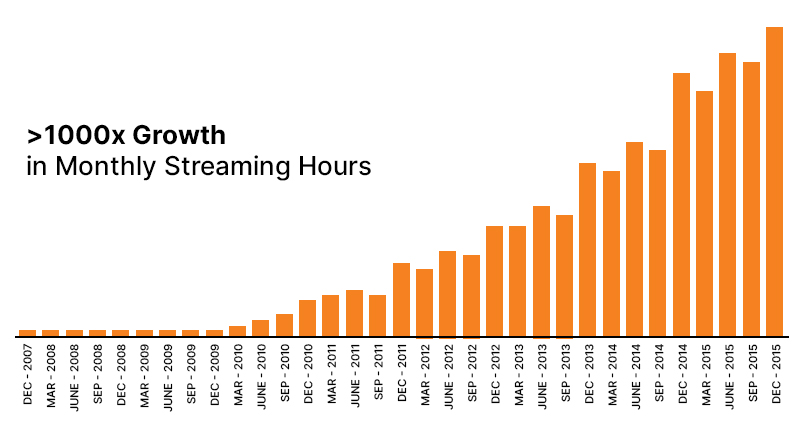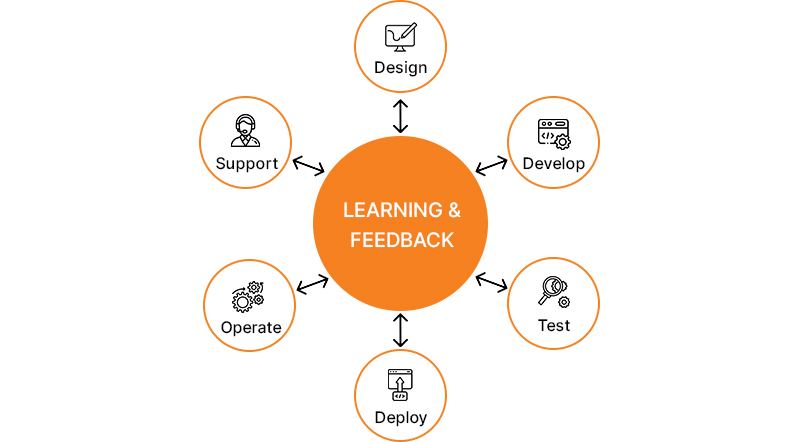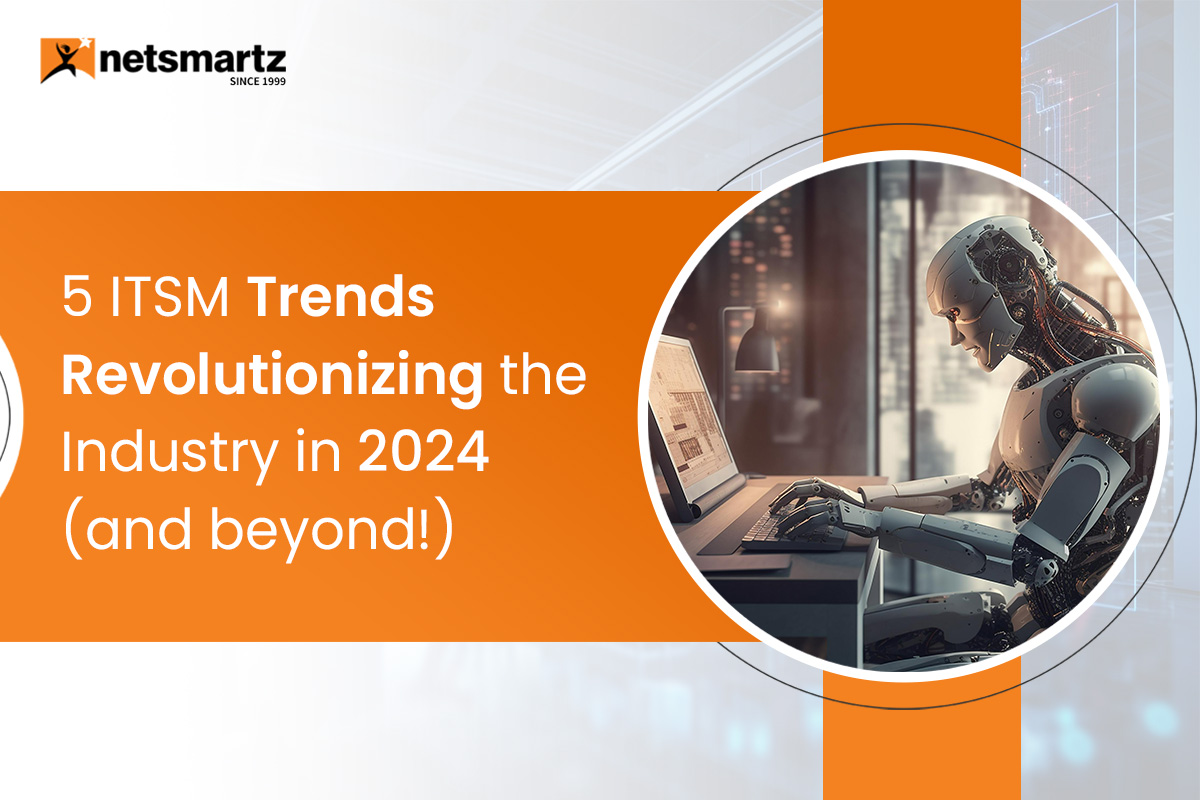Netflix, an entertainment giant, has emerged as a pioneering force in the tech world due to its unparalleled tech innovation. Through its single video-streaming application, Netflix has left many top tech companies trailing behind, showcasing world-class engineering, a unique culture, and groundbreaking product development.
Among the outstanding practices, Netflix serves as a shining example of DevOps, which has been a catalyst for its rapid innovation and numerous business advantages. Their DevOps culture has enabled them to achieve near-flawless uptime, expedite the rollout of new features to users, and witness substantial growth in subscribers and streaming hours.

With an impressive global reach of nearly 214 million subscribers across 190 countries, Netflix stands as the world’s most widely used streaming service. This remarkable success can be attributed to their ability to embrace cutting-edge technologies and their DevOps culture, allowing them to respond to consumer demands and elevate user experiences swiftly. Surprisingly, despite being the poster child of DevOps, Netflix doesn’t explicitly identify as such.
In this insightful case study, we’ll delve into how Netflix organically cultivated a DevOps culture through innovative and unconventional approaches, ultimately reaping significant benefits from this transformative mindset.
Netflix’s Move to the Cloud
Netflix’s move to the cloud was not only driven by the need for improved infrastructure but also a shift towards embracing modern technology practices such as DevOps services. The outage in 2008 served as a wake-up call, leading Netflix to partner with AWS for their cloud migration and DevOps consulting services. Instead of a straightforward transfer, they opted to rewrite their entire application in the cloud to become truly cloud-native and capitalize on the benefits of DevOps services. This approach allowed Netflix to adopt a microservices architecture, enhancing their scalability, reliability, and overall user experience. By integrating DevOps services into its transformation, Netflix solidified its position as a tech innovation leader in the entertainment industry.
Netflix’s move to a denormalized data model using NoSQL databases played a pivotal role in enabling their teams to operate with greater independence and flexibility. This shift allowed each team to build and deploy changes at their preferred pace, fostering a culture of innovation and agility.
Centralized release coordination replaced the previous cumbersome multi-week hardware provisioning cycles, facilitating seamless and efficient continuous delivery. This transformation also introduced self-service tools, empowering engineering teams to make independent decisions and take ownership of their processes.
As a result, Netflix witnessed a remarkable surge in innovation and embraced the essence of DevOps culture. Notably, their subscriber base grew an astounding eightfold from the previous year, demonstrating the substantial impact of these changes. Moreover, Netflix’s monthly streaming hours soared by a thousandfold from December 2007 to December 2015, reflecting their unprecedented success in the entertainment industry.
[Also Read: Best Practices for Successful DevOps Transformation]
Netflix’s Chaos Monkey and the Simian Army
Netflix’s transition to the cloud brought about resiliency, mitigating the risks of past outages. Yet, the engineering team sought to ensure they could handle any unforeseen errors that might pose significant challenges in the future.
1. Chaos Monkey
Recognizing the power of constant failure to avoid larger disasters, Netflix embraced a DevOps approach to enhance its cloud infrastructure’s safety, security, and availability. They achieved this through the ingenious creation of Chaos Monkey, a tool designed to continually test the system’s ability to endure unexpected outages without affecting consumers. Chaos Monkey randomly terminates production instances and services within the architecture by running as a continuous script across all Netflix environments.
Chaos Monkey’s implementation has proven invaluable for Netflix developers, serving multiple purposes:
- Identifying system weaknesses and vulnerabilities,
- Encouraging the development of automatic recovery mechanisms to address these weaknesses,
- Facilitating code testing under various unexpected failure scenarios,
- Fostering the continuous building of fault-tolerant systems.
2. The Simian Army
Following their triumph with Chaos Monkey, Netflix engineers were determined to bolster their resilience against a broader range of failures and abnormalities. Thus, they devised the Simian Army, an ingenious virtual arsenal of tools with distinctive capabilities.
Latency Monkey
The first member of this dynamic army, Latency Monkey, introduces simulated delays in RESTful client-server communication, mimicking service degradation. This allows Netflix to assess upstream services’ response and ability to handle such conditions. By creating substantial delays, they can simulate complete service downtime, evaluating the system’s survivability without physically taking services offline. This proved particularly valuable for testing new services, affecting the failure of dependencies without impacting the overall system.
Conformity Monkey
Another valuable tool in the Simian Army is Conformity Monkey, which diligently scans for instances that deviate from the most promising methods and promptly shuts them down. This action prompts the service owners to re-launch these instances correctly, ensuring adherence to standard practices.
Doctor Monkey
Doctor Monkey is responsible for identifying unhealthy models by tapping into health checks and monitoring external health indicators, such as CPU load. The identified unhealthy instances are promptly dismissed from service and terminated once the service owners address the root cause.
Janitor Monkey
Janitor Monkey is tasked with maintaining a clutter-free cloud environment, diligently searching for and disposing of unused resources, and ensuring optimal resource utilization.
Security Monkey
Security Monkey, a wing of Conformity Monkey, takes on the critical role of identifying security breaches or vulnerabilities, such as improperly configured AWS security groups. It promptly removes offending instances to maintain a secure environment. Additionally, Security Monkey verifies the validity of SSL and DRM certificates, ensuring timely renewals when needed.
10-18 Monkey
Netflix’s Simian Army, a collection of innovative tools, embodied the principles of DevOps, focusing on automation, quality assurance, and business prioritization. Among these tools, 10-18 Monkey, short for Localization-Internationalization, played a crucial role in identifying configuration and runtime issues for instances serving users across diverse geographic locations with varying languages and backgrounds.
Chaos Gorilla
Another member of this resilient army was Chaos Gorilla, which emulated the entire outage of an Amazon availability area. By doing so, it rigorously tested the system’s ability to automatically re-balance to operational availability locations without any manual intervention or visible impact on users.
Netflix’s Container Journey
Titus, a powerful deployment unit and versatile batch job scheduling system, played a pivotal role in Netflix’s expansion of support for growing batch use cases. It facilitated seamless scalability and efficient resource utilization for batch users, enabling them to rapidly assemble sophisticated infrastructure and optimize larger instances across multiple workloads. This empowered batch users to swiftly schedule locally developed code for execution on Titus, streamlining their processes and boosting productivity.
Beyond its impact on batch operations, Titus also brought significant benefits to service users. It simplified resource management and provided local test environments consistent with production deployment, ensuring a seamless transition from development to deployment. Developers experienced a remarkable improvement in pushing new versions of applications, enabling faster iterations and enhancing the overall development cycle.
The speed and efficiency of Titus’s deployments were nothing short of revolutionary. What took tens of minutes was accomplished in just one or two minutes. This expedited process allowed batch and service users to experiment locally, conduct quick tests, and deploy with unwavering confidence, ultimately leading to a more agile and robust development ecosystem.
Titus was a game-changer for Netflix, fostering innovation, efficiency, and confidence across their operations. Its seamless integration into Netflix’s infrastructure exemplifies how cutting-edge technology solutions can significantly elevate the capabilities and performance of a leading entertainment platform.
Netflix’s “Operate What You Build” Culture

In response to these challenges, Netflix profoundly shifted towards the “Operate what you build” model. They invested significantly in improving development and operations, emphasizing experimentation and innovation for engineering teams. This evolution fostered a more collaborative, DevOps-oriented approach, where developers now took ownership of the entire SDLC, including deployment and operation.
Integrating DevOps cloud services further enhanced their capabilities, enabling faster and smoother development cycles. By unifying development and operations, Netflix successfully overcame the inefficiencies and bottlenecks, ensuring more seamless end-to-end progress and shorter timeframes for code deployment.
Ultimately, this embrace of a comprehensive “Operate what you build” culture enabled Netflix to unleash the full potential of its engineering teams, elevating their performance and further solidifying its position as a global technology leader in the entertainment industry.
To tackle the challenges and embrace the spirit of DevOps principles, Netflix adopted the “Operate what you build” approach, fostering shared ownership of the entire SDLC and dismantling silos. This transformative shift allowed the teams developing a system to take full responsibility for its operation and support, encompassing deployment, performance bugs, alerting, capacity planning, and partner support.
Full Cycle Developers
The evolution towards “Full Cycle Developers” emerged as a remarkable model, equipping dev teams with powerful productivity tools and entrusting them with end-to-end SDLC ownership. Netflix supplemented this paradigm shift with continuous training and support through various means, including dev boot camps, to foster skill development among new developers. Streamlining the deployment process, Netflix integrated user-friendly tools like Spinnaker, a Continuous Delivery platform, to enable releasing software changes with high velocity and confidence.

While adopting such models requires a significant mindset shift for teams and developers, the rewards are substantial. To apply this model effectively outside Netflix, organizations can begin by evaluating their specific needs, considering the costs involved, and introducing only the necessary complexities. Embracing a transformative mindset becomes the cornerstone of successfully implementing this approach in any context.
Lessons Enterprises can learn from Netflix’s DevOps Strategy
While Netflix’s DevOps strategy is tailored to their specific work environment, there are valuable lessons to learn and apply in various organizations:
1. Embrace developer empowerment
Allow developers to access the production environment without imposing strict policies, empowering them to make responsible decisions.
2. Value freedom and responsibility
Trust intelligent hires to find their best solutions and balance freedom with accountability.
3. Prioritize innovation velocity
Encourage engineers to develop new features swiftly, delighting customers with reduced time-to-market.
4. Streamline processes and procedures
Eliminate unnecessary bureaucracy to facilitate faster decision-making and maintain agility.
5. Emphasize context over control
Provide teams with relevant business context rather than controlling their every move, fostering a culture of autonomy.
6. Enable diverse technology choices
Allow teams to use their preferred programming languages, libraries, and tools, promoting flexibility and adaptability.
7. Foster collaboration over silos
Promote communication and cooperation between teams, encouraging seamless integration and interdependence.
8. Embrace ownership culture
Encourage the “you build it, you run it” mindset, where teams take responsibility for their own creations.
9. Rely on data-driven decisions
Make informed choices based on data and invest in algorithms and systems that quickly process vast amounts of information.
10. Prioritize customer satisfaction
Keep the focus on enhancing the user experience with every release and aligning efforts with customer needs.
11. Cultivate a DevOps culture
Rather than just implementing DevOps practices, foster a healthy culture that embodies the principles of collaboration, automation, and continuous improvement.
How Netsmartz Can Empower Your DevOps Journey
At Netsmartz, we understand that while Netflix is a DevOps gold standard, not every organization can adopt its culture verbatim. DevOps is a mindset that requires adapting processes and organizational structures to enhance software quality and drive business value continuously. It involves a range of practices, including automation, continuous integration, delivery, deployment, testing, and monitoring.
With our skilled engineering teams at Netsmartz, we are here to help streamline your delivery and deployment pipelines using the right DevOps toolchain and expertise. Our DevOps-managed services aim to accelerate your product life cycle, foster rapid innovation, and achieve optimal business efficiency by delivering high-quality software with reduced time-to-market.
If you’re looking to hire DevOps Azure developers or need top-notch DevOps automation services, Netsmartz is your go-to partner. We tailor our solutions to fit your specific needs, seamlessly integrating DevOps practices into your organization to drive success in the dynamic software development and delivery world.
Harness the power of DevOps to grow your business
Contact Us Today
Summary
Kickstart Your Project With Us!
Popular Posts
CONTACT US
Let's Build Your Agile Team.
Experience Netsmartz for 40 hours - No Cost, No Obligation.
Connect With Us Today!
Please fill out the form or send us an email to







